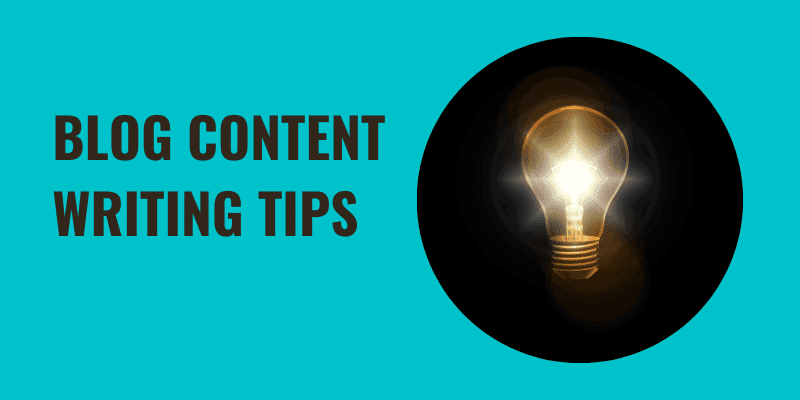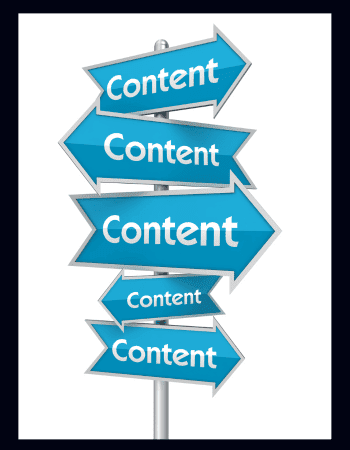
Are you struggling to grow your blog audience and reach new readers? Do you want to learn how to write blog content that attracts, engages, and converts your visitors?
If so, believe me you’re not alone. Many bloggers-amateurs and pros-face the same challenge. The challenge of creating high-quality content that stands out from the crowd and resonates with their target audience.
But don’t worry, there is a solution. In this article, we’ll share with you 10 blog content writing tips that will help you attract new readers and keep them coming back for more.
We also look at different types of blog content along with how to structure your content to maximize results. But first let’s get a clear understanding of blog content.
Disclosure: This page may contain affiliate links. This means if you buy something after clicking a link, I may be paid a small commission at no extra charge to you. Thank you!
Below are 10 proven tips to help you create content that will attract and hold your visitors attention:
1. Know Your Audience
The first step to writing high converting blog content is to understand who you are writing for and what problems they are facing. This will help you craft content that is relevant, valuable, and engaging for your readers.
Now there is an abundance of AI tools that ccan help you analyze your existing audience data, conduct keyword research, and generate buyer personas based on your niche and goals.
2. Blog Content Writing Structure
A blog structure plays a crucial role in engaging your blogs’ readers. Well structured blog content improves readability, and conveys information effectively.
A well-structured blog post will make it easier for your readers to follow your main points, arguments, and conclusions.
AI tools like Bard and Bing Auto Pilot can help you create an outline for your blog post based on your topic and keyword.
You can also take advantage of AI tools to generate subheadings, bullet points, and transitions to connect your ideas and improve the flow of your content.
It may also help your blog rank higher on search engines. The reason is they favor content that is organized and easy to understand.
Importance of Content Structure
- Organized appearance: A well-structured blog provides a clear and organized presentation of information. It helps readers navigate through the content easily, find what they are looking for, and understand the flow of ideas.
- Skimmable content: Many readers skim through content before deciding whether to read it fully. An organized structure with concise headings and subheadings allows readers to quickly assess the relevance and value of the content.
- Retains Attention: A blog that is well-structured captures and retains readers’ attention. A compelling introduction, informative subheadings, and a logical flow of ideas keep readers engaged and motivated to continue reading.
3. Write Catchy Headlines
The headline and meta description are the first things that your potential readers will see when they come across your blog post on search engines or social media.
So both your headline and meta description need to capture their attention, spark their curiosity, and entice them to click through to your website.
4. Provide Valuable Information
The ultimate goal of your blog post is to provide your readers with useful and relevant information that they can apply to their own situation.
This will help you establish your authority, credibility, and trustworthiness in your niche.
It will also increase the chances of your readers taking the desired action, such as subscribing to your newsletter, downloading your lead magnet, or buying your product or service.
5. Optimize Your Content for SEO
Search engine optimization (SEO) is the process of improving your content and website to rank higher on search engines for relevant keywords.
This will help you drive more organic traffic to your blog and reach more potential customers.
AI tools such as RankMath SEO can help you with this by analyzing your content and suggesting improvements for SEO, such as adding keywords, internal and external links, images, and alt text.
You can also use AI to generate SEO-friendly content that matches the search intent and user expectations of your target keyword.
There are a number of key elements involved in SEO blog content writing. Here are some of those elements:
Elements of SEO Writing
- Keyword research: Identify relevant keywords and phrases that people use when searching for information related to your topic. This helps you understand what your target audience is looking for so you can include those keywords in your content.
- On-page optimization: Place keywords in relevant areas of your content. Place keywords in the page title, headings, meta descriptions, URLs, and throughout the body text. However, be careful to avoid keyword stuffing.
- Value: Create high-quality content that provides valuable information, answers questions, or solves problems for your target audience.
- Readability: Format your content for easy readability. Use clear headings, subheadings, bullet points, and short paragraphs. This helps users and search engines quickly scan and understand the content.
- User experience: Ensuring that your blog is user-friendly, mobile-friendly, and loads quickly. User experience is an important factor in search engine rankings.
Effective SEO blog content writing strikes a balance between optimizing for search engines and creating valuable, engaging content for human readers.
Bloggers need to understand their target audience. Then it will be easier to do keyword research, and implement SEO best practices.
At the same time the will focus on providing valuable information and a positive user experience.

SEO Blog Content Writing Elements
- Reasearch keywords to understand what your blog users are looking for.
- Ensure your content is easliy understood by both Search engines and humans.
- Provide valuable information so your blog users keep coming back.
- Create a good user experience for visitors by ensuring your content loads correctly on their screens.
6. Use Storytelling and Emotion
One of the best ways to connect with your readers and persuade them to take action is to use storytelling and emotion in your blog content.
Stories can help you illustrate your points, provide examples, and create a memorable impression on your readers.
Emotion can help you trigger your readers’ feelings, desires, and motivations, and influence their decision-making process
7. Include Visuals and Multimedia
Visuals and multimedia can help you enhance your blog content and make it more appealing and attractive for your readers. They can also help you convey complex or abstract concepts, provide evidence, and increase retention and recall.
Including visual elements in your blog content can increase engagement, improve comprehension, and make the content more shareable.
Visual elements include images, videos, infographics, and other forms of multimedia that are placed within a blog post.
- Images: Including relevant and high-quality images within a blog post can help illustrate concepts, break up text. And it makes the content visually appealing.
- Infographics: Inforgraphics condense information into a visually appealing format. They are easy to understand and share. Infographics are particularly useful for presenting facts.
- Videos: embedding videos within a blog post allows you to provide dynamic and interactive content. Video blog content can be used for demonstrations, tutorials, interviews, or storytelling.
- Slideshows: Bloggers can embed slideshows within a blog post. They make it easy for readers to click through slides and grasp key points or concepts.
8. Add Social Proof and Credibility
Social proof and credibility indicators are elements that show your readers that your blog content is trustworthy, authoritative, and popular.
They can include testimonials, reviews, ratings, endorsements, awards, certifications, badges, and social media shares.
9. Use A Strong Call to Action
A call to action (CTA) is a statement that tells your readers what you want them to do next after reading your blog post.
It can be to sign up, download, buy, share, comment, or anything else that aligns with your goals.
A strong CTA will motivate your readers to take action and increase your conversion rate.
10. Edit And Proofread Your Content
The final step to writing high converting blog content is to proofread and edit your content for grammar, spelling, punctuation, clarity, and style. This will help you ensure that your content is error-free, readable, and professional.
Several tools such as Grammarly AI Assistant can help you with this. The tool will check for gammatical errors and suggest corrections, point out spelling and punctuation mistakes, an more.
Types Of Blog Content
There are several types of content are used on blogs. The most common form of blog content is written posts or articles. However, videos, ebooks, saless letters, and product reviews are all forms of content you may find on a blog.
1. Long-form Blog Content
Long-form content is probably the most popular form of blog content writing. Long form content refers to articles, blog posts, or any written content.
Long form content is typically more detailed compared to shorter pieces. Long-form is generally more than 1,000 words.
The purpose of long-form blog content writing is to provide comprehensive, detailed, and well-researched information on a particular topic.
Long-form content often offers a deeper exploration of a subject. This allows the writer to discuss multiple angles, and present a detailed argument or case.
Benefits of Long-form Content
Long form blog content writing has two main benefits:
- Establish Authority: This form of content give content writers to showcase their knowledge and expertise on a subject. It helps to establish the author as an expert in their field.
- In-depth coverage: Long-form blog content generally contain detailed information, research findings, case studies, and supporting evidence. So readers can gain a comprehensive understanding of the subject.
Organized Content
- Helps readers immediately understand what your blog is about
- Provides clear navigation options
- Allows readers to quicly scan content
- Keeps user on your longer blog for a longer period of time
- Encourages users to take action after visting your blog

It is extremely important for new bloggers to develop the blog content writing skills that will help them achieve these objectives.
User Experience
It is vital that bloggers create good user experience for your blog content. This is important for engaging readers and encouraging them to return to your site.
Here are some tips to enhance the user experience:
Good User Experience Tips
- Intuitive navigation: Ensure your blog has a user-friendly navigation menu that allows visitors to easily explore different sections or categories of your content. Include clear labels, drop-down menus if necessary, and make sure the navigation is consistent across all pages.
- Responsive design: Optimize your blog for different devices, including desktops, tablets, and mobile phones. Use a responsive design that automatically adjusts the layout.
- Fast loading speed: Users expect websites to load quickly. Optimize your blog’s performance by minimizing file sizes, leveraging caching techniques, and choosing a reliable hosting provider.
- Focus points: Layout written content in a way that draws the readers attention to the most important information on the page.
- Clear instructions: They should be highly visible, clear, and indicate where the visitor will land once they take an action. This is an are where bloggers can use their writing skills effectively.
- Calls to action: These appear on your blog in the form of buttons or hyperlinked text. They tell your to users to where you want them to go. Utilize your blog content writing tenchiques to create effective calls to action.
Update Your Blog Content
As amateur bloggers gain experience they become better at writing blog content. So it is important to use newly acquired blog content writing skills to keep your blog content up-to-date and relevant.
Maintaining up-to-date blog content requires ongoing research, monitoring industry trends.
Therefore, regularly update and refresh older posts and articles with new information or insights.
Update Content
Fresh content serves as a signal to search engines that your website is active and provides value to users. It also serves to:
- Credibility: Up-to-date blog content demonstrates your commitment to providing accurate and reliable information. It helps establish you as an authority in your niche and builds trust with your readers.
- Increased loyalty: When you publish up-to-date content, it attracts and retains reader attention. Relevant blog posts are more likely to resonate with your audience. They can spark discussions, and encourage social sharing or comments.
- Backlink opportunities: When you produce up-to-date content, it increases the chances of other websites linking to your blog. Website and blogger owners are more inclined to reference or cite current and valuable information;
Summary
The purpose of blog content writing is to inform, entertain,and engage your readers. Bloggers fulfil the purpose of creating content by providing valuable information, insights, or entertainment on a specific topic.
Blog content aims to attract and retain a target audience, build community, and establish the author as an authority or thought leader in their niche.
Writing valuable blog content can serve various goals, including sharing personal experiences, offering advice or tips.
These goals can also include showcasing expertise, or promoting products and services.
Ultimately, the purpose of writing blog content is to create a connection with readers and provide value.
It also serves the purpose of encouraging them to take a desired action. That action may include subscribing, sharing, or returning to the blog for future content.

